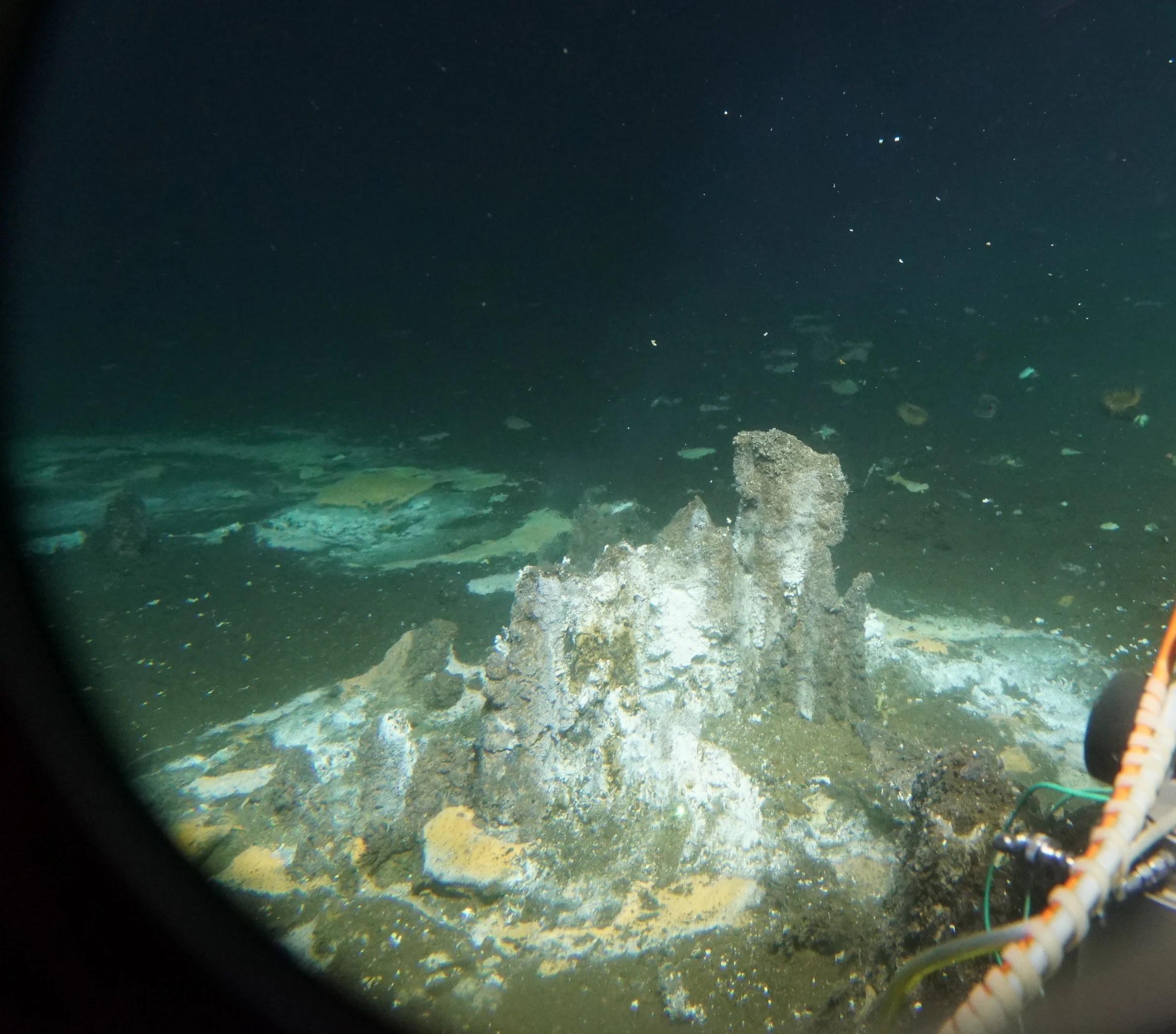AT 42-05 | 20 November 2018
STEAMing at the seabed…
The deep sea is such a magical place. I am always in awe of my surroundings. When I look through the ALVIN viewport and take in the dramatic beauty of these deep seascapes, my jaw is often agape. Still, I sometimes have a hard time effectively conveying the stunning majesty of these sites to others. One way to effectively communicate the beauty and dynamic of these sites to others is to work with artists. I am thrilled that an incredible artist, Rebecca Rutstein, joined us on this expedition.
Rebecca shares my love of the ocean and is particularly fascinated by the deep sea. This expedition marks the fifth time she has sailed as an ‘artist at sea’ and this ALVIN dive marks her first visit a hydrothermal seafloor ecosystem.
Rebecca and I met at a National Academy of Sciences Keck Futures Initiative workshop on “Ocean Memory”. She was subsequently awarded the Delta Visiting Chair for Global Understanding at the University of Georgia (UGA) and is the first artist to receive the award. She and I are collaborating on a project focused on Guaymas Basin and Rebecca already produced a number of Guaymas-themed works that went on exhibit in the UGA Museum of Art November 1st. Her exhibit will be on display for a year.
I am always excited when I climb the ladder down into the ALVIN. You never know what you will see and experience during a dive but you can be assured that you will see something you have never seen before (at least once). But, this dive is different – working with an artist has changed the way I see and think about things. The marriage of STEM (STEM=science, technology, engineering and mathematics) and art gives rise to STEAM. On dive 4994, Rebecca and I explored incredible areas around Cathedral Hill, deployed some new instruments, and observed amazing geology and biology. When we landed on the seaflloor and looked out the viewport, we saw a set of chimneys surrounded by Beggiatoa mats and some others that were covered in tubeworms as well as mats.
On the seafloor, mats serve as a bulls eye, marking areas where energy-rich hot fluids discharge from the seafloor.
In Guaymas, the Beggiatoa mats are prolific – thick, widespread and colorful. I have blogged about Beggiatoa mats often but the mats in Guaymas are special. They are thick, expansive and full of metabolic surprises.
The sharp edges of the mat demarcate changes in thermal and, hence, geochemical regimes. Similarly, the transition between colors – orange to white and/or yellow – likely reflects shifts in reduced sulfide concentration and flux. Sometimes, the mats have surprising topography that generates flow regimes that accentuate fluid flow. The biology we observe tells us a lot about the chemistry.
The Beggiatoa are large bacteria – visible to the naked eye and when viewed through a microscope, they resemble orange spaghetti.
These mats grow laterally along the seafloor and vertically upwards along the hydrothermal chimneys.
They take advantage of sulfide fluxes wherever they can get them and their colonization of geological features creates a magical patchwork of colors and topography along the seabed.
One of the highlights of the dive for Rebecca was seeing a hydrothermal chimney colonized by both Beggiatoa and Riftia.
Riftia are giant tubeworms that ‘farm’ sulfide-oxidizing bacteria in an internal compartment called a trophosome. The bacterial symbionts in Riftia oxidize hydrogen sulfide, just like Beggiatoa, and they use this energy to fuel their metabolism and growth. Some portion of this production is siphoned off by the animal to support its own grown. These chemosymbiotic associations are common at hydrothermal vents and at cold seeps.
After a very successful dive, we returned to the surface full of energy and ideas and motivation. I am excited to see what art Rebecca generates based on the incredible things she witnessed during this dive!











